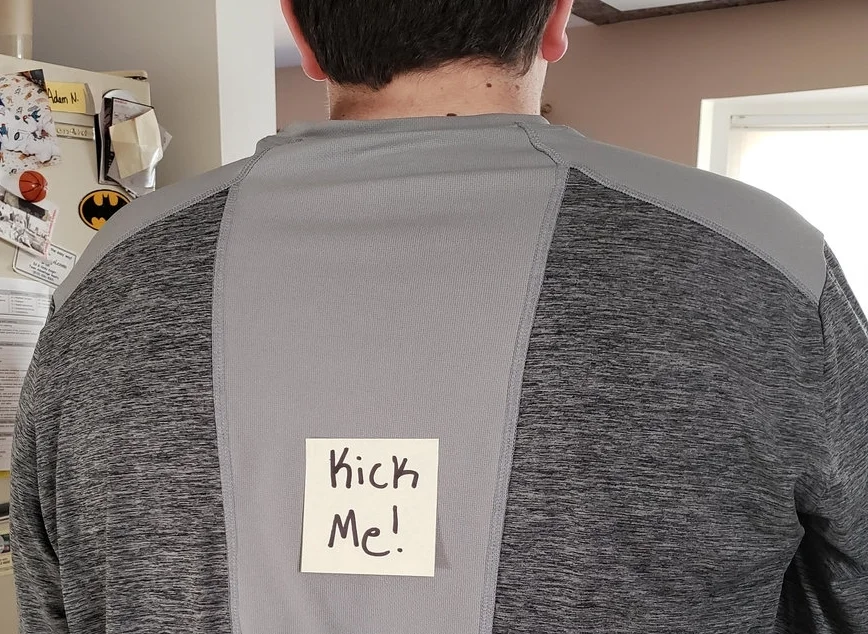Today is April Fools’ Day, a day for pranksters to up their game and go wild! Planning pranks can take time and energy, but it is worth the effort when the victim springs the trap and is caught up in the prank. There are many harmless pranks people can pull for April Fools' Day, like scattering toy spiders throughout the house and waiting for an arachnophobia to stumble across them. Or perhaps switching the salt and sugar labels for some extra salty cookies. However, there are some pranks that may go too far and are no longer funny. In fact, they could be dangerous. According to Statistic Brain, about 175 people are injured by an April Fools’ prank each year. That may not seem like a large number, but considering pranks are supposed to be fun, it is far too high.
A viral video from July showed a motorcyclist picking up a mug from the back of a car and returning it to the owner by driving up to her window! While this was done as an act of kindness, the opposite could be done as a prank. An online forum lists several car pranks that could easily go wrong. One trick is to leave a cup with coffee, or other drink, on a person’s car and hope they won’t notice. When they start driving, the cup goes flying and spills all over the car! This doesn’t seem like a big deal, other than possibly making a mess on the car, but the cup could also fall and hit the windshield of the car, or even another car, causing confusion, panic, and possibly a car crash if the surprised driver swerves.
Another prank that most people have heard of, is covering someone’s car in Post-it notes or wrapping it up in saran wrap. These may seem funny at first glance, but another look can reveal car accident dangers. The Post-it prank is more of a painstaking, time-consuming art project, so the “victim” may want to only clear the windshield and drive with the rest of the car still covered. Not only does a colorful Post-it car cause other drivers on the road to be distracted but the Post-its could go flying from the vehicle and hit the other cars, once again causing confusion, panic, and swerving cars to get into a car crash. Wrapping a car in saran wrap on the other hand, makes it difficult for someone to get into their car in case of an emergency. Also, once again, a saran wrapped car may encourage distracted driving behavior from other drivers who see the car and are puzzled or humored by it. It just seems like any pranks concerning a car, though they seem funny, may also be dangerous, because at the very least, they cause distracted driving on the road.
The cinder block prank is another popular car prank posted online, that seems more dangerous than funny. This prank involves someone removing the tires of a car and leaving the car boosted on cinder blocks. Unless the prankster is a professional mechanic, removing tires could possibly damage the car and make it unusable for the foreseeable future. If not done properly, taking parts off of a car may damage the car in a way that makes it unsafe to operate and may even lead to car accidents. Car damage and the associated risk of car accidents, are also a possibility in pranks that involve filling the car up with water by tossing a hose through a partially open car window. If not water, even filling a car up with something like golf balls could cause car accidents, if the balls rush out of the car and into the road or into traffic, when a door is opened.
April Fools' pranks are meant to be funny, enjoyable, and perhaps also embarrassing to those exposed to the prank. They should not make people concerned for their safety, for the safety of their possessions, like their car, or the safety of others not even involved in the joke. Pulling a prank in, on, or around a car should be thoroughly thought out before being put into action, so that it doesn’t lead to permanent car damage or cause car accidents. If you have to cover a car in Post-its, even if it takes a whole day to do so, it’s best to film the victim’s reaction and then help them remove all of the paper before the car is driven. You’ll still get Instagram likes for the victim’s priceless reaction video and you’ll likely avoid any legal trouble you may have risked if you had caused a car accident.
April Fools’ Day can be a very enjoyable holiday. Who doesn’t love the trick gum that snaps at a person’s fingers or squirting water at someone through a flower pin on your lapel? These pranks are small and harmless, however, not all pranks are. Don’t be the person who wraps your best friends car in saran wrap. Setting up a prank in or on someone’s car could cause a car crash, whether it be from distraction or even causing damage to the car. If you or someone you know is injured in a car accident, call The Michigan Law Firm, PC at 844.4MI.FIRM for a free consultation.







